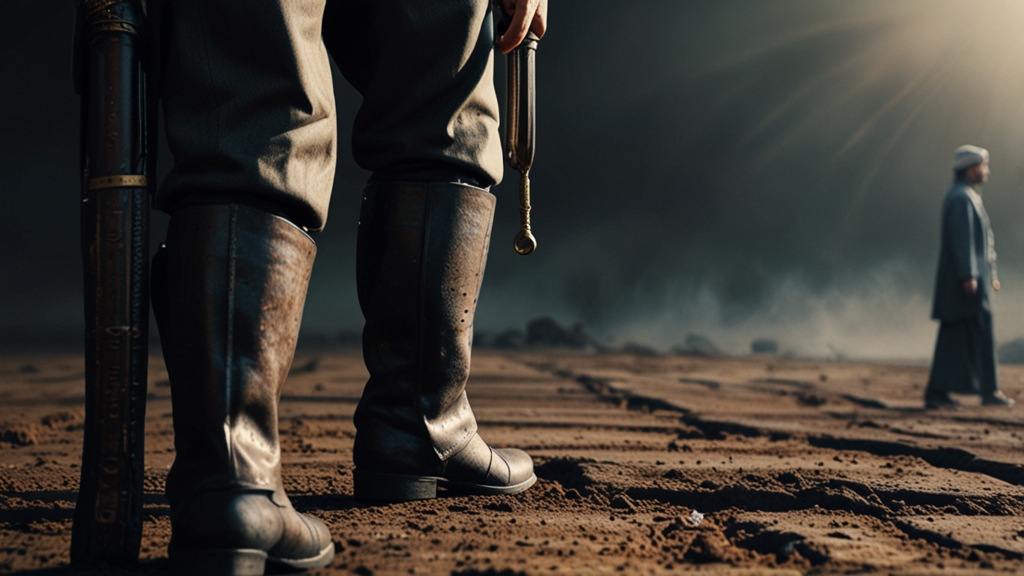How History Repeats Itself: Lessons from the World Wars
History has a peculiar way of repeating itself, often with startling similarity. This phenomenon is evident when we scrutinize the World Wars of the 20th century. By examining the causes, major events, and aftermath of World War I and World War II, one can glean essential lessons about human behavior, international relations, and the cyclical nature of history itself.
The Causes: Nationalism, Alliances, and Economic Strain
The roots of both World Wars can be traced back to a mixture of extreme nationalism, complex alliances, and economic pressures. In the early 20th century, European nations were embroiled in a web of alliances that compelled them to enter conflicts not directly related to their interests. The assassination of Archduke Franz Ferdinand was the spark that ignited World War I, but the underlying tension had been brewing for years due to nationalistic fervor and imperial ambitions.
Similarly, the origins of World War II were seeded in the unresolved issues of World War I. The harsh stipulations of the Treaty of Versailles imposed severe economic and territorial restrictions on Germany, fostering a climate of resentment. Adolf Hitler rose to power by exploiting these grievances, blending them with his aggressive nationalist ideology. Again, a combination of economic hardship and political maneuvering set the stage for a global conflict.
“Those who cannot remember the past are condemned to repeat it.” - George Santayana
Patterns of Aggression and Appeasement
Another striking similarity lies in the manner of aggression and the initial responses to it. In the lead-up to World War I, the Balkan Wars and smaller conflicts in Europe were clear indicators of rising tension. Nations were expanding their military capabilities and engaging in skirmishes that foreshadowed a larger confrontation.
Before World War II, there were glaring signals of impending conflict—Hitler’s annexation of Austria, the dismemberment of Czechoslovakia, and the invasion of Poland. Despite these overt acts of aggression, many world leaders favored a policy of appeasement, hoping to avoid another large-scale war. This miscalculation proved disastrous, demonstrating that ignoring or placating authoritarian expansion only emboldens the aggressor.
“The guns of September taught the lesson that organizing for peace needs planning, competence, and patience equal to the art of waging a war.” - Dwight D. Eisenhower
Technological and Tactical Evolutions
While the specific technologies and tactics evolved significantly between the two wars, the fundamental principle of “total war” remained the same. World War I introduced new technological horrors such as chemical warfare and trench battles, resulting in unprecedented carnage. By World War II, technology had advanced further with tanks, aircraft, and eventually, nuclear weapons. These innovations altered the landscape of warfare but retained the devastating impact of total war on both soldiers and civilians.
Yet, the evolution of military technology also underscores an essential lesson: preparation and adaptation are critical. Nations that failed to adapt quickly to new forms of warfare often found themselves at a significant disadvantage. The Blitzkrieg strategy utilized by Nazi Germany at the beginning of World War II exemplifies how innovation can dramatically influence the course of conflict.
Aftermath and Long-Term Consequences
The aftermaths of both wars brought about significant shifts in global power structures and had lasting social, economic, and political consequences. The conclusion of World War I saw the dissolution of empires, redrawing of borders, and the formation of the League of Nations—an early attempt at global governance that unfortunately failed to prevent another world conflict.
World War II resulted in even more profound changes. The United Nations was established with a more robust framework aimed at maintaining international peace and security. Moreover, the ideological battle lines of the Cold War were drawn, setting the stage for decades of geopolitical tension between the Eastern and Western blocs.
“We must not only denounce occupation and all acts of aggression, but we have the responsibility to prevent them.” - Pope John Paul II
Conclusion: Lessons for the Future
Reflecting upon the World Wars, we are reminded of the critical importance of diplomacy, vigilance, and preparedness. Nationalism and economic strain can easily escalate into large-scale conflict if not properly managed. Mechanisms for international cooperation must be continually strengthened, and the lessons of the past should inform present and future policies.
By understanding these historical patterns, we can better navigate the complexities of today's geopolitical landscape, striving to prevent the repetition of such catastrophic events. Understanding history is not merely an academic pursuit; it is a crucial tool for ensuring a more stable and peaceful world.








